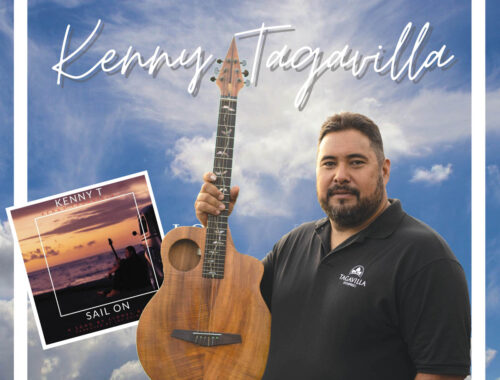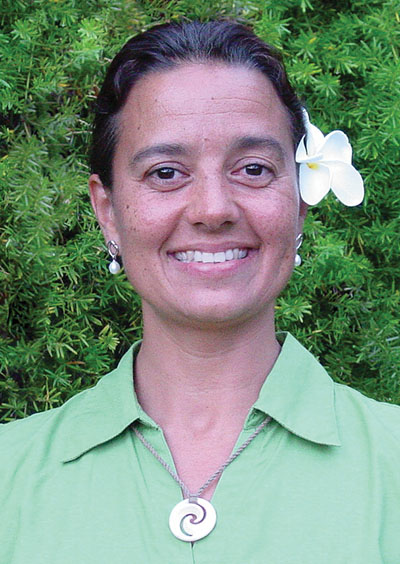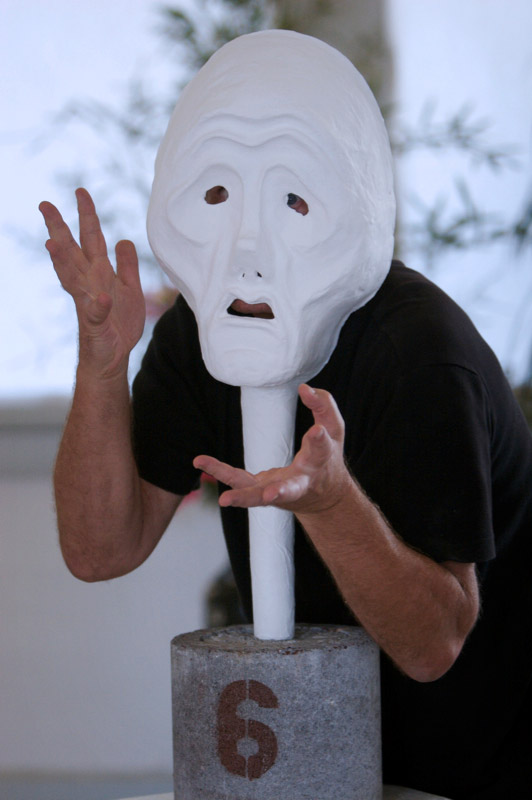
It Was a Hard Day’s Night for Cindy Coats: Now She’s Back, With a Little Help From Her Friends
 By Margaret Kearns
By Margaret Kearns
Holualoa resident Cindy Coats recalls distinctly the moment she declared her chosen profession.
“I was 10 years old and had just seen the most incredible movie with my mother,” she says. The movie? It was The Beatles’ animated, psychedelic undersea fantasy, “Yellow Submarine.” “I remember walking out of that theater, looking at my mother and saying, ‘That’s it, I’m going to be an artist.’ I had been drawing for as long as I could remember and loving it, but that movie sealed the deal.”
It’s a profession this New Mexico native has embraced passionately for decades, nearly 20 years of which have been right here on Hawai‘i Island. And then, in one of life’s ironic twists, more than 40 years after having her world rocked by The Beatles’ “Yellow Submarine,” she found her Kailua-Kona gallery, her artwork and her spirits submerged in sea water.
A year ago this month, we remember Japan’s devastating 8.9 earthquake and the tsunami it generated, killing tens of thousands in that country and touching the lives of many here in Hawai‘i—those with family and friends at the epicenter and in surrounding environs—and those here who were directly impacted by the tsunami that reached Kona’s shoreline on March 11, 2011.
Incredibly resilient and an eternal optimist by nature, Coats admits the event initially left her “ragged and raw.” “My gallery and the dozen or so retail outlets in the Seaside Shopping Mall (directly across the road from the Kailua-Kona pier) and King Kamehameha Beach Hotel were pretty much ground zero when the largest of the flood waves arrived here,” she says.
The force of the water shattered the gallery’s multiple glass doors and brought down its north facing wall. “My husband Barry and I were able to remove about six originals before we were evacuated, everything else (hundreds of open and limited edition giclée prints, a number of originals, materials and furnishings) was lost,” according to Coats.
When the shock subsided, clarity set in. Amid hundreds of phone calls, letters and emails from friends and collectors of her work, she says she realized, “This was a disaster but not a tragedy. Thankfully, no one here was injured or killed. What we lost was stuff, just stuff.”
The outpouring of compassion and support she received from individuals worldwide was tremendously humbling, she says, adding that it also helped her to relax and give herself permission to take as long as she needed to get up and running again. With her usual candor, she admits it took her a while to get to that space. “My career has evolved organically, nothing was ever rushed or pressured, it all just happened very naturally. Suddenly, I felt panicked; I felt I just had to get back to work and get the gallery opened again immediately, but that was all self-imposed pressure.”
“I really was shaken; I was overwhelmed and didn’t know where to start. In fact, with the loss of my ‘stuff’ I felt adrift. I thought I had lost my mojo—could I still paint, could I still come up with these crazy, creative ideas again?”
She credits her father, nuclear physicist Dr. Richard L. Coats, with helping her to take the first rational steps to re-constructing her life’s work. “Of course, my dad is so analytical and organized—pretty much the opposite of me—he got me centered, suggested a step-by-step outline and check-lists to keep the re-building of the gallery and my inventory on track.”
Two other players figured heavily in her plan of attack: her landlord, Alan Kimi, owner of the Seaside Shopping Mall and the Seaside Hotel chain, and Congresswoman Mazie Hirono.
“Alan could not have been more supportive, more accommodating. From day one, he encouraged all of us (his merchant tenants) to take as much time as we needed; there was no pressure to re-open before we were ready,” Cindy says. “His team did a tremendous job re-building and repairing the spaces.”
Congresswoman Hirono, she says, was in Kailua-Kona almost immediately following the tsunami to assess damage and lend her support. “She was a tremendous and compassionate resource for all us, giving us contact information for various state and federal agencies that could provide advice and assistance.”
More than that, Cindy says, it was the fact that she stayed in touch throughout the entire recovery with heartfelt concern and encouragement that touched her the most. And when the doors to Cindy Coats Gallery opened again more than four months later on July 30, 2011, a proclamation honoring the gallery arrived from the Congresswoman.
It reads in part, “It was just a few short months ago that I traveled to Kailua-Kona and saw the damage that followed the March 11 tsunami. That day, I was deeply impressed by the determination of Cindy and the neighboring business owners to rebuild and recover. Small businesses are the heart of our island lifestyle and today we see the results of the resilience of this Kona community.”
During that period of re-construction, Cindy says she learned amazing life lessons every day while working at her in-home studio. High on that list, she says, is no matter what we think, we’re not in control. Today refreshed, re-energized and more creative than ever, Cindy says what she’s noticed most about her post-tsunami work is that it is looser and freer than before. Much hasn’t changed, however. Music, underwater gardens and sea life, whimsy and bright, bold colors remain her signature. And The Beatles also continue to play a role. Earlier this year, one of her most coveted originals, having spent a few years in a central location at their Holulaloa home, made it down to the gallery. Entitled “All You Need is Love,” it sold nearly immediately. While reluctant to let it go, she says the greatest joy she gets from producing her art is sharing it with others who are excited and appreciative of it.
One of her favorite quotes, painted in red on a beat-up canvas hanging in her gallery after “going to hell and back” in the turbulent ocean waters, is “Remain Calm and Carry On.” It’s a quote that carries more meaning today than ever for the artist. ❖
Contact writer Margaret Kearns at margaretkearns@gmail.com
See more of Cindy’s work at www.cindycoats.com
Editor’s note: With the exception of one, all of the Seaside Shopping Mall merchants have re-opened their businesses. They all have incredible stories to tell, as do the many other shop owners, hoteliers, restaurateurs and oceanfront homeowners who sustained damage and loss in the Kona District. We salute them all!


